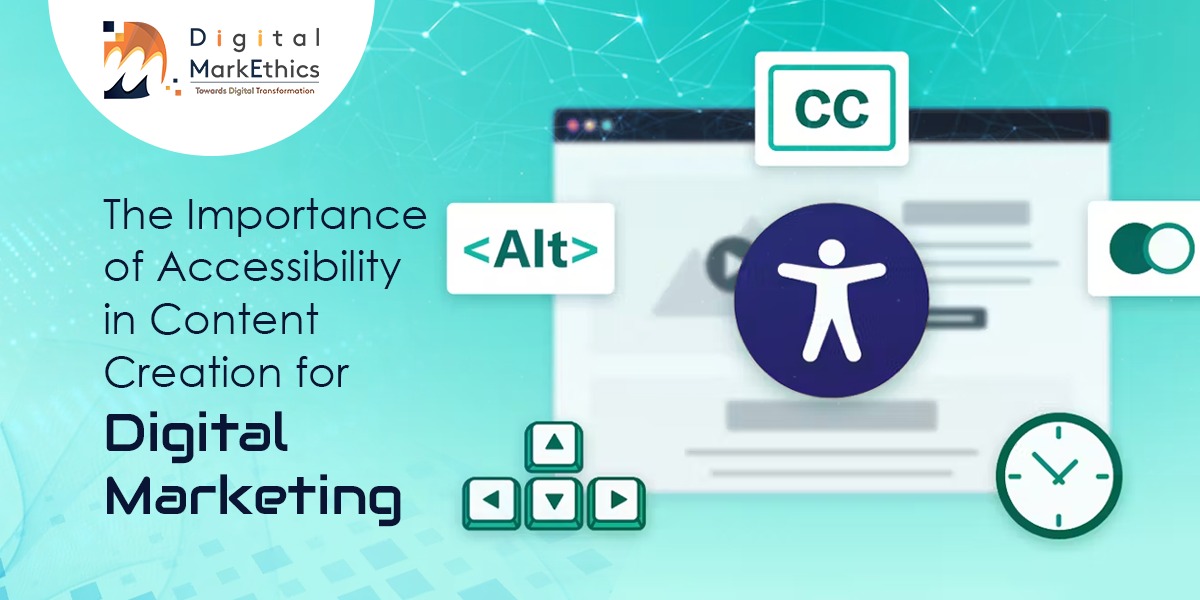In the realm of Digital Marketing, one of the most crucial yet often overlooked aspects is ensuring that your content is accessible to a broad and diverse audience. As a digital marketer, your goal is to create content that not only reaches a wide range of people but also resonates with them, regardless of their abilities or disabilities. Making accessibility a core part of your content strategy not only benefits those with specific needs but enhances the experience for all users.
Understanding Digital Accessibility
At its core, digital accessibility means designing and developing content that is usable and meaningful for as many people as possible. This includes individuals with visual, auditory, cognitive, and motor impairments. The fundamental question to ask yourself is whether everyone, regardless of their abilities, can access and engage with the content you create.
Consider the following scenarios:
- Visual Impairments: Are users who rely on screen readers getting the same information as fully sighted users?
- Neurodiverse Needs: Can individuals with conditions like dyslexia or autism understand and process your content effectively?
Accessibility is not just about catering to a minority; it’s about making your content inclusive for everyone. This inclusivity can significantly enhance your reach and impact in digital marketing.
The Importance of Accessibility in Content Creation
Incorporating accessibility into your content creation in digital marketing brings several advantages:
- Wider Audience Reach: By making your content accessible, you open it up to a broader audience, including those with disabilities. This inclusivity can increase engagement and foster a more loyal customer base.
- Improved SEO: Search engines favor content that adheres to best practices for usability, including accessibility. This can lead to higher search rankings and increased visibility.
- Compliance with Legislation: Many countries have legal requirements for digital accessibility. By meeting these standards, you can avoid potential lawsuits and penalties.
- Enhanced Brand Reputation: A commitment to accessibility demonstrates that your brand values inclusivity, which can positively impact your reputation and customer loyalty.
- Ethical Responsibility: Ensuring that everyone, including those with disabilities, has equal access to information is simply the right thing to do. It reflects a commitment to fairness and respect for all users.
Key Considerations for Accessible Content
When developing an accessibility plan for your content, it’s essential to consider the needs of users with various impairments:
- Visual and Auditory Impairments: The World Health Organization (WHO) estimates that around 2.2 billion people worldwide have some form of vision impairment. This statistic underscores the importance of including alt text for images and providing content that is compatible with screen readers.
- Neurodiversity: Neurodiverse individuals, including those with conditions such as dyslexia, ADHD, or autism, may process information differently. Ensuring that your content is clear, structured, and free of overly complex language can make it more accessible to these users.
Best Practices for Accessible Content Creation
To ensure your content creation in digital marketing is as accessible as possible, follow these best practices:
- Use Clear, Readable Fonts: Stick to simple, easy-to-read fonts, especially in images and video captions. Avoid over-formatting text, as screen readers may not be able to interpret bold or italicized text.
- Consider Color Contrast: Choose color combinations that provide strong contrast between text and background. This makes your content more readable for those with visual impairments, such as color blindness.
- Provide Image Descriptions and Alt Text: Alt text allows visually impaired users to understand the content of images. Ensure that your descriptions are concise and informative, focusing on the key details.
- Add Captions and Audio Descriptions for Videos: Captions provide a text version of spoken words in videos, which is essential for users with hearing impairments. Audio descriptions can offer additional context by describing visual elements.
- Use Emojis and Hashtags Sparingly: While emojis and hashtags can enhance your content, overuse can make your posts difficult to understand. Ensure that screen readers can interpret emojis and that hashtags are clear and concise.
- Implement Inclusive Language and Imagery: Use language that reflects the diversity of your audience. Avoid jargon and complex terms, and choose images that represent a wide range of people and experiences.
- Test Your Content for Accessibility: The best way to ensure your content is accessible is to test it with real users, including those with disabilities. This testing can provide valuable insights and help you identify areas for improvement.
General Guidelines for Accessible Content
In addition to the specific practices outlined above, there are general guidelines you should follow to make all your digital marketing content more accessible:
- Use Clear, Simple Language: Write in a way that is easy for most people to understand, regardless of their educational background or familiarity with your industry.
- Ensure Color Contrast: Choose colors that have sufficient contrast to make text readable against backgrounds. This is crucial for users with visual impairments.
- Provide Alternative Text (Alt Text) for Images: Describe images concisely to help visually impaired users understand the content.
- Avoid Flashing Content: Flashing images or videos can trigger seizures in users with photosensitive epilepsy. Limit or avoid such content.
- Test with Real Users: Involve people with disabilities in your testing process. Their feedback will help you create truly accessible content.
Incorporating accessibility into your content creation in digital marketing is not just a trend—it’s a necessity. By following these guidelines, you can ensure that your content reaches and resonates with a diverse audience, enhancing your brand’s reputation and impact in the digital space.

